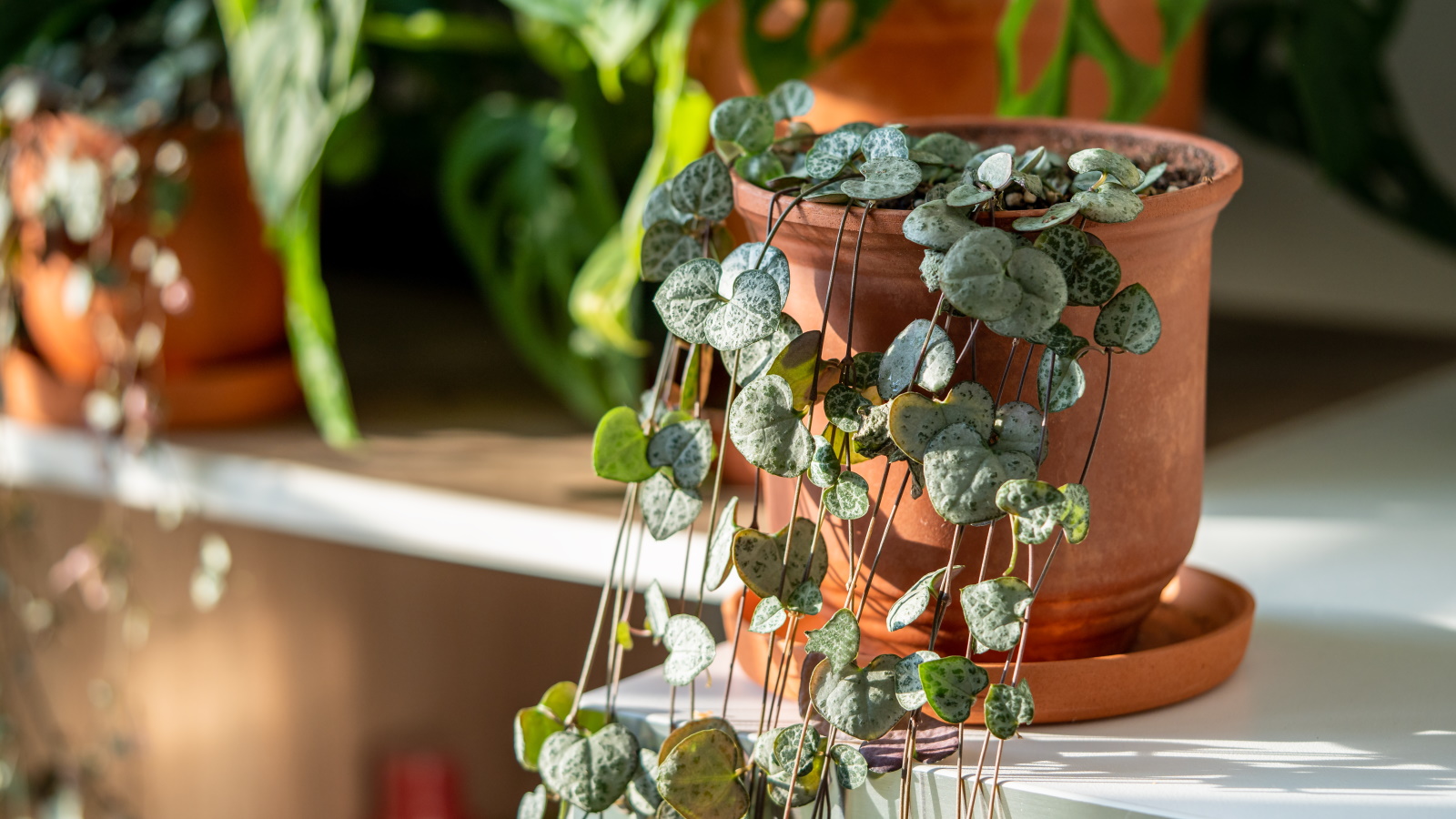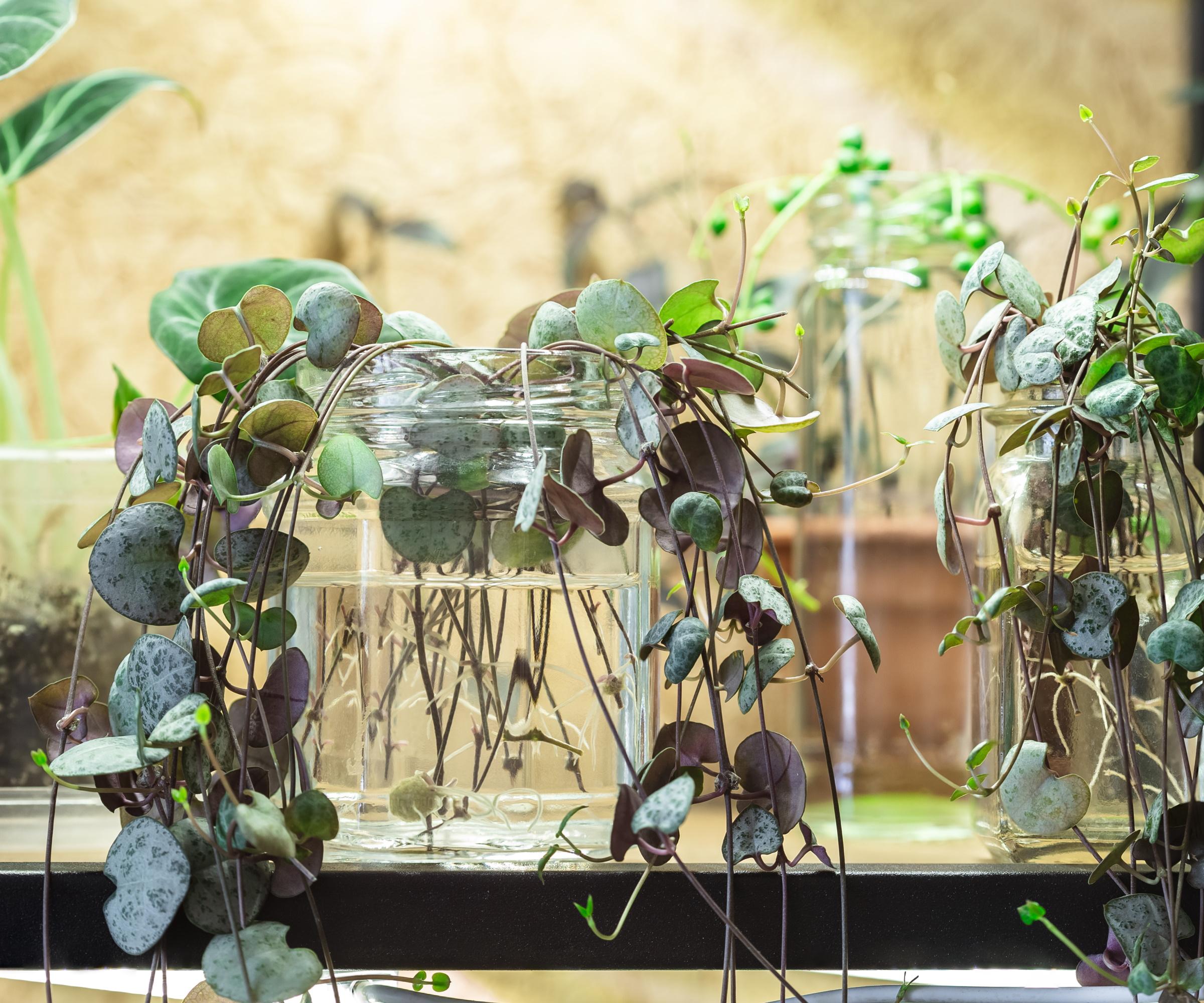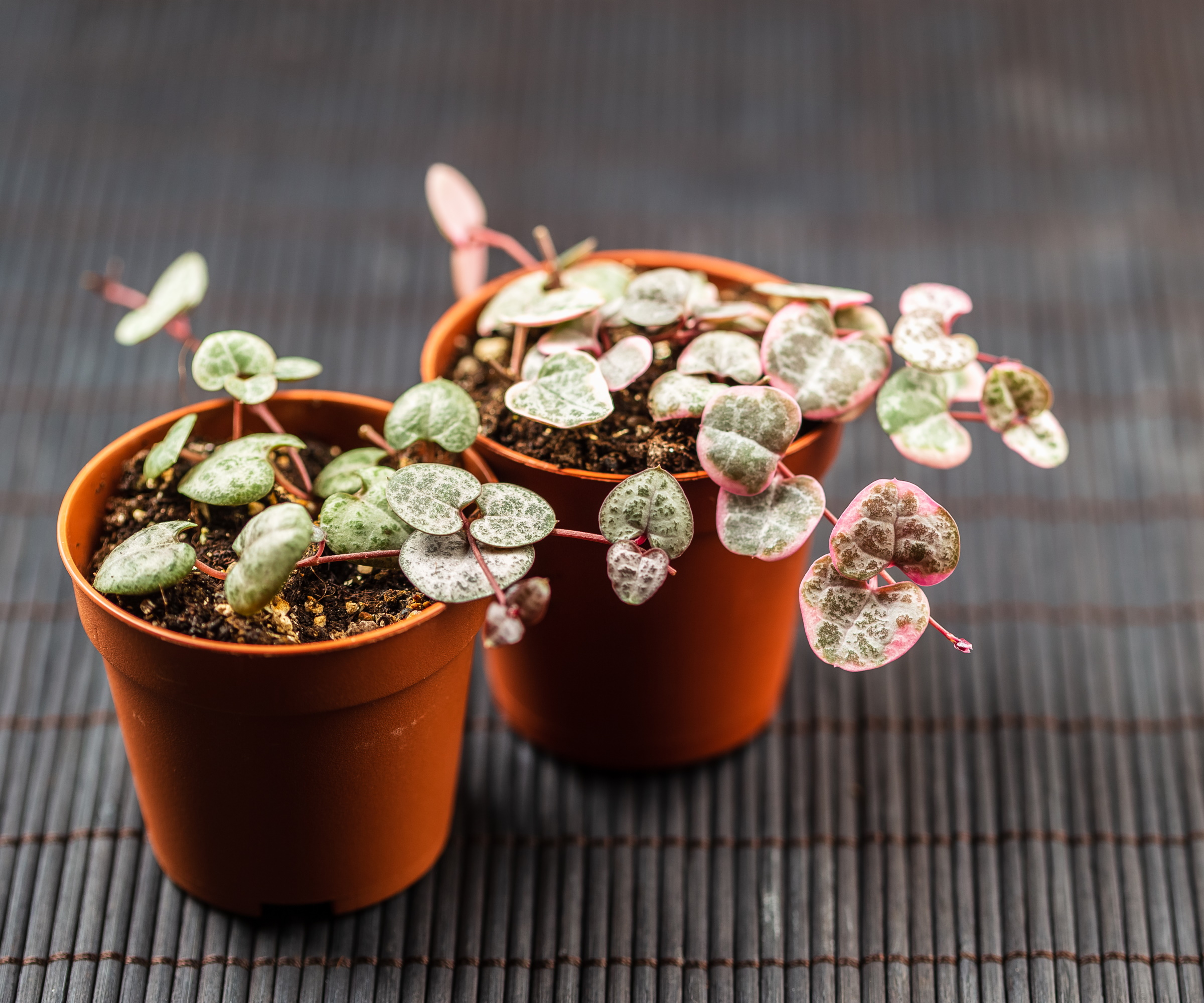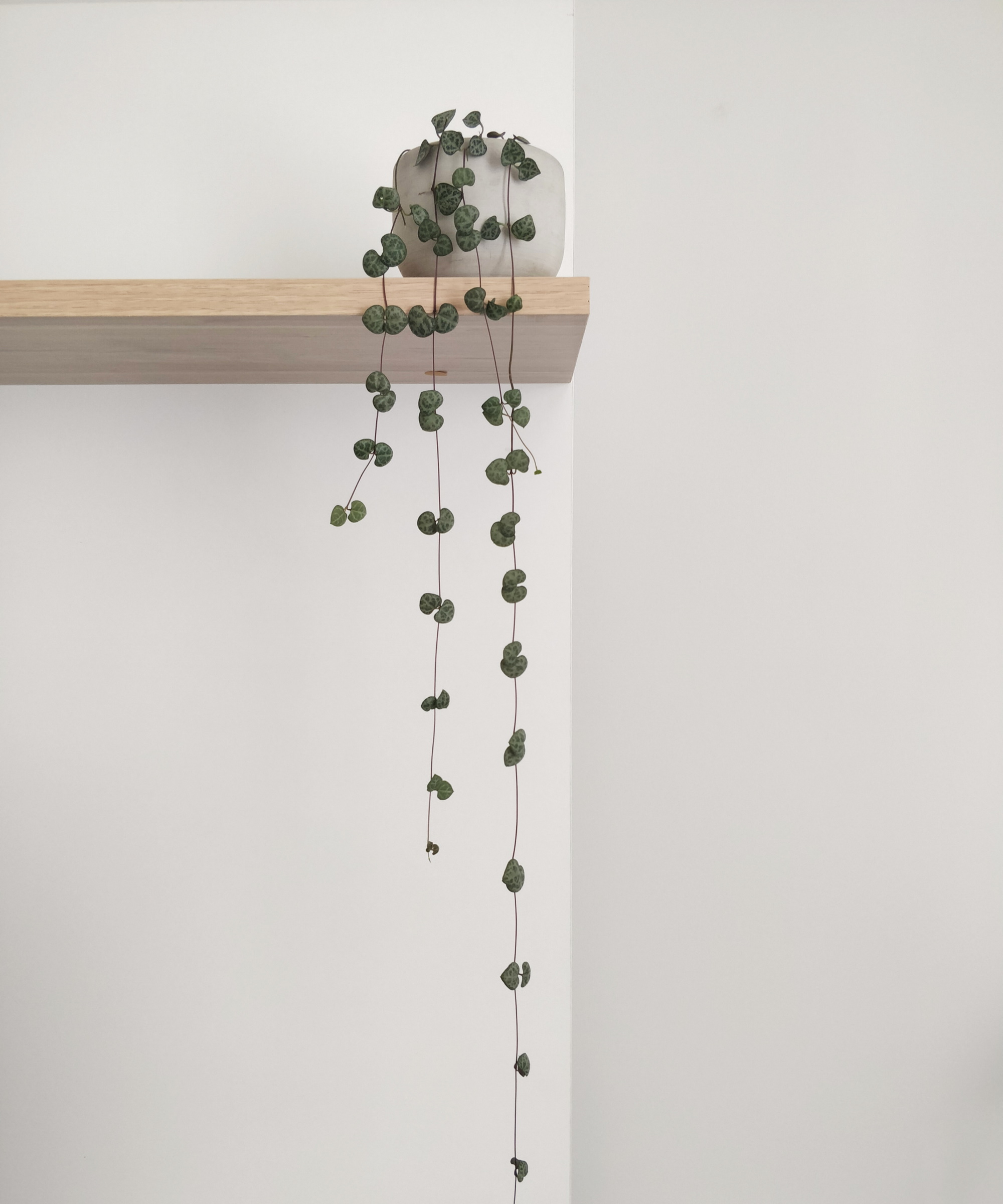How to propagate string of hearts – and multiply your collection of this elegant trailer
Expert tips for successfully propagating this plant-lovers' favorite


The string of hearts plant, or Ceropegia woodii, is a long-loved houseplant for its beautiful trailing strings of threaded heart-shaped leaves. It's a fast-grower once it gets going, making it easy to propagate and grow more of this elegant trailer for free.
String of hearts is a succulent native to warmer climates, like South Africa. They're easy-to-care-for and will happily multiply in length in partially shaded spots as they tolerate lower light. They can reach up to two meters indoors, although you can easily keep it at your desired length by trimming it.
You can buy this plant at garden centers or online, like this string of hearts from The Sill, and then propagate it by taking cuttings. They may take a little longer to root but will grow right before your eyes once those roots are established.
We've asked indoor plant experts for tips on how to propagate a string of hearts successfully.

How to propagate string of hearts
Whether you choose to propagate a string of hearts in soil or in water, it's easy to do and will leave you with elegant trails of threaded green and gray heart-shaped leaves. We've gathered expert tips on how to successfully multiply these ceropegia plants.
Propagate in water

A popular way to propagate trailing string of hearts is by taking a few cuttings and rooting them in water.
You will want to cut a stem of around 4in long above a node, where roots will develop. Remove the bottom 3-4 leaves and submerge the node in water. Make sure to use clean tools, like pruning shears or scissors.
'Place the stem in warm water for 4-6 weeks. Change the water every 5-7 days to keep it fresh,' says Julie Bawden Davis, indoor plant expert at Healthy Houseplants.

Julie Bawden-Davis is a garden author and University of California Certified Master Gardener, who has written several gardening books, including Indoor Gardening The Organic Way. In addition to running HealthyHouseplants.com, she shares indoor gardening advice on her YouTube channel @HealthyHouseplants.
Once the plant has healthy roots of around half an inch long, you can pot them up in soil where they will continue to grow as the roots establish in their new home.
'Keep in direct sun and change water regularly if using the water method to promote faster rooting,' says Andy Burde, houseplant expert at the House Plant shop.
Using a clear container is a popular choice for propagating in water because you can track the progress of the roots, for example this hanging plant propagation station from Amazon has glass vials so you can observe growth.

Andy is a seasoned horticulturist and houseplant expert with HousePlantShop.com. With years of experience in plant care, propagation, and interior gardening, he specializes in nurturing healthy, vibrant houseplants and advising enthusiasts on best practices. His focus is on sustainable and practical methods that cater to both beginners and advanced plant lovers.
Propagate in soil

Perhaps a more straightforward way to propagate your Ceropegia woodii is by rooting it directly in soil.
You will similarly need to take cuttings of around 4in long with a node at the tip. This time, it is recommended to dip the cutting in a rooting medium, like this rooting powder from Garden Goods Direct. You can then place the cutting in soil with the node buried by at least an inch.
'Cover the cutting with a humidity dome. You can do this by cutting the bottom off of a plastic bottle and putting it over the pot, which will lock in humidity and encourage root development,' says Julie.
The cuttings will establish in the soil and grow long trailing strings until you have a plant at your desired length to hang on display.
'You can also just lay cuttings on top of the soil. String of hearts grows protuberances on the stems called tubers. If you lay the tubers on soil, they will sprout roots and stems,' says Lisa Eldred Steinkopf, indoor plant expert from the Houseplant Guru.
You can even propagate string of hearts in soil by circling smaller strings back into the soil where they will develop roots. This is a great method if you want to give your current string of hearts plant a fuller look.

Lisa is a houseplant expert who runs her blog The Houseplant Guru with over a decade of professional experience at Steinkopf Nursery and Garden Center in Michigan. As a child, Lisa helped her grandma tend to African violets and other houseplants. Since then, Lisa has forged a career providing houseplant advice, holding lectures and writing for publications across the US.
Benefits of growing string of hearts

Not only do houseplant lovers favor these trailing plants for their delicate and elegant tiny green heart-shaped leaves, but growing string of hearts also has lots of benefits.
'It’s a great succulent plant for a full sun situation. I have mine in my west-facing window and they bloom regularly. The small purple blooms aren’t all that showy but have a very cool shape,' says Lisa.
Little purple flowers will grow along the strands of ceropegias during warmer seasons, adding to their charming look.
They are also among the best low-maintenance indoor plants, as they retain water well like other succulents. When it comes to how to water these houseplants, watering them well and letting them dry out in between will allow them to thrive.
'These houseplants help improve air quality as a natural air purifier,' says Andy Burde. Among other air-cleaning indoor plants, string of hearts help to remove toxic pollutants from the air, leaving your home feeling fresher.
FAQs
When is the best time to propagate string of hearts?
The best time to propagate your string of hearts from cuttings is during its growing season in spring and summer. You will see new shoots appearing from your main string of hearts plant around this time. It is possible to propagate string of hearts during fall and winter too, but it may take a longer time for the roots to establish. You can help encourage growth by using a humidity dome, either made out of a plastic bottle or like these humidity domes on Amazon, which keeps the cuttings warm.
How long does string of hearts take to grow?
String of hearts plants are fast-growing indoor plants once they are established. When propagating them from cuttings, it usually takes several weeks to produce roots. In warmer seasons, this will happen a lot faster. As established plants, you can expect your string of hearts to grow up to two meters long indoors and can keep it at a desired length by trimming it.
How often should you water string of hearts?
String of hearts are succulents and do not need as regular watering as other plants. They retain water well and will thrive if left to dry out between watering. They are native to warm climates, like South Africa, and will appreciate regular misting to increase humidity levels. When propagating string of hearts, it's important to keep cuttings well-watered if in soil and to change water regularly if rooting in water.
The string of hearts indoor plant is popular for its low-maintenance nature and elegant trailing look. It is propagated in water or soil and will grow quickly once cuttings have established roots. If you choose to propagate using the water method, you might find this article on water propagation mistakes helpful.
Sign up to the Homes & Gardens newsletter
Design expertise in your inbox – from inspiring decorating ideas and beautiful celebrity homes to practical gardening advice and shopping round-ups.

Tenielle is a Gardens News Writer at Homes & Gardens. She holds a qualification in MA Magazine Journalism and has over six years of journalistic experience. Before coming to Homes & Gardens, Tenielle was in the editorial department at the Royal Horticultural Society and worked on The Garden magazine. As our in-house houseplant expert, Tenielle writes on a range of solutions to houseplant problems, as well as other 'how to' guides, inspiring garden projects, and the latest gardening news. When she isn't writing, Tenielle can be found propagating her ever-growing collection of indoor plants, helping others overcome common houseplant pests and diseases, volunteering at a local gardening club, and attending gardening workshops, like a composting masterclass.
-
 Lavender and vanilla custard pudding with rhubarb recipe
Lavender and vanilla custard pudding with rhubarb recipeA real crowd pleaser, this recipe both strikes nostalgic notes and feels irresistibly modern
By Alice Hart
-
 How I Host... A stunning Easter with Lucinda Chambers
How I Host... A stunning Easter with Lucinda ChambersThe fashion maven shares how she creates a stunning Easter table setting
By Francesca York